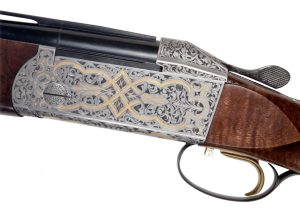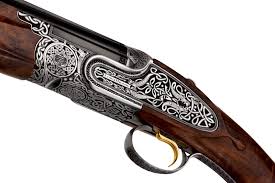The Delicate Art of Celtic Engraving
Shotgun Celtic engraving is a unique and intricate art form that melds the worlds of firearms and ancient Celtic designs. This specialized craft involves adorning shotguns with elaborate Celtic patterns that are both aesthetically pleasing and rich in cultural symbolism. Understanding the history, techniques, cultural significance, and key artisans in this field provides a comprehensive appreciation for this extraordinary form of artistry.
The History of Shotgun Celtic Engraving
The tradition of engraving firearms dates back to the early days of gun-making when craftsmen would embellish weapons with intricate designs to showcase their skills and create unique pieces. The integration of Celtic designs into shotgun engraving is a relatively recent development, emerging prominently in the late 19th and early 20th centuries. As Celtic art experienced a revival during this period, artisans began incorporating its distinctive motifs into firearm decoration.

Celtic designs are characterized by their complex interlacing patterns, knots, and spirals, which have roots dating back to early medieval art in the British Isles. These designs were initially seen in illuminated manuscripts, stone carvings, and metalwork. When applied to firearms, these ancient motifs provide a link between modern weaponry and historic art traditions, creating a fascinating juxtaposition.
The history of shotgun Celtic engraving is also intertwined with the broader history of firearms and their cultural roles. Decorative firearms were often symbols of status and power, owned by nobility and elite hunters. The addition of Celtic designs further emphasized the cultural heritage and personal taste of the owner, making each piece a unique statement of identity and artistry.
Techniques Used in Celtic Engraving on Shotguns
Engraving a shotgun with Celtic designs requires a blend of traditional craftsmanship and modern precision techniques. The process begins with the selection of high-quality steel or other metals suitable for fine detailed work. Once the base material is chosen, artisans use tools such as gravers, burins, and chisels to etch the intricate Celtic patterns onto the firearm’s surface.

One of the most critical techniques in this form of engraving is the use of hand engraving, where each line and curve is meticulously carved by hand. This method ensures that every detail is executed with precision, allowing for the complex interwoven patterns characteristic of Celtic designs. The depth and consistency of the engraving are crucial, as they affect both the visual appeal and the durability of the design.
Advancements in technology have also introduced the use of laser engraving in creating Celtic patterns on shotguns. While this method allows for greater consistency and speed, it lacks the personal touch and slight imperfections that give hand-engraved pieces their unique charm. Some artisans combine both techniques, using lasers for initial outlines and hand tools for finishing details, blending efficiency with craftsmanship.

The Cultural Significance of Celtic Designs
Celtic designs carry profound cultural significance, rooted in the history and mythology of the Celtic people. These patterns often symbolize concepts such as eternity, interconnectedness, and the natural world. For instance, the endless knot, a common motif in Celtic art, represents the infinite nature of life and the interconnectedness of all things. When etched onto a shotgun, these designs imbue the firearm with layers of meaning beyond its functional purpose.
The cultural resonance of Celtic designs also extends to their role in expressing identity and heritage. For many, owning a shotgun adorned with Celtic engravings is a way to connect with their ancestral roots and celebrate their cultural background. This form of personalization makes each engraved shotgun a deeply personal artifact, reflecting the owner’s lineage and values.
Moreover, the use of Celtic designs in engraving speaks to the broader appreciation of art and craftsmanship. It highlights the desire to merge functionality with beauty, creating objects that are not only practical but also serve as works of art. This dual purpose elevates the shotgun from a mere tool to a symbol of cultural pride and artistic achievement.
# # #


Comments